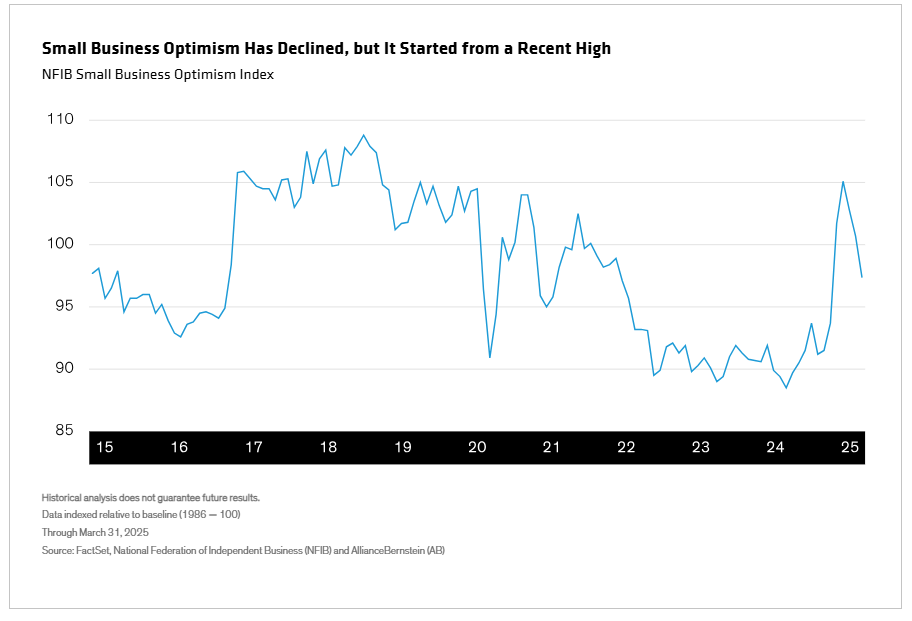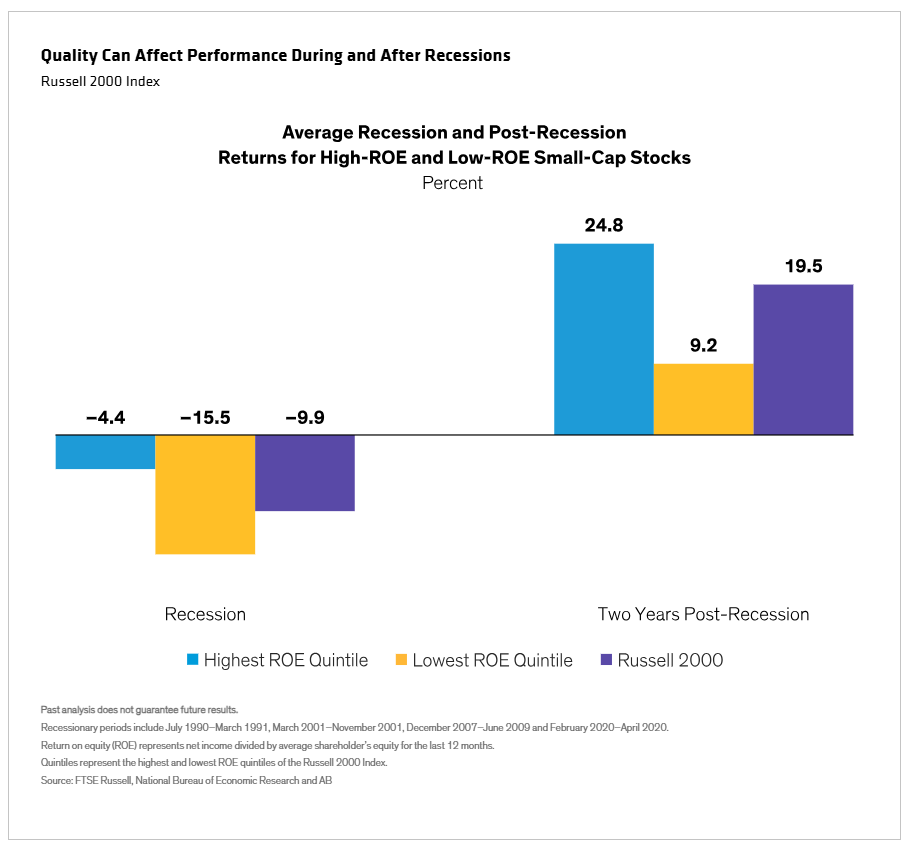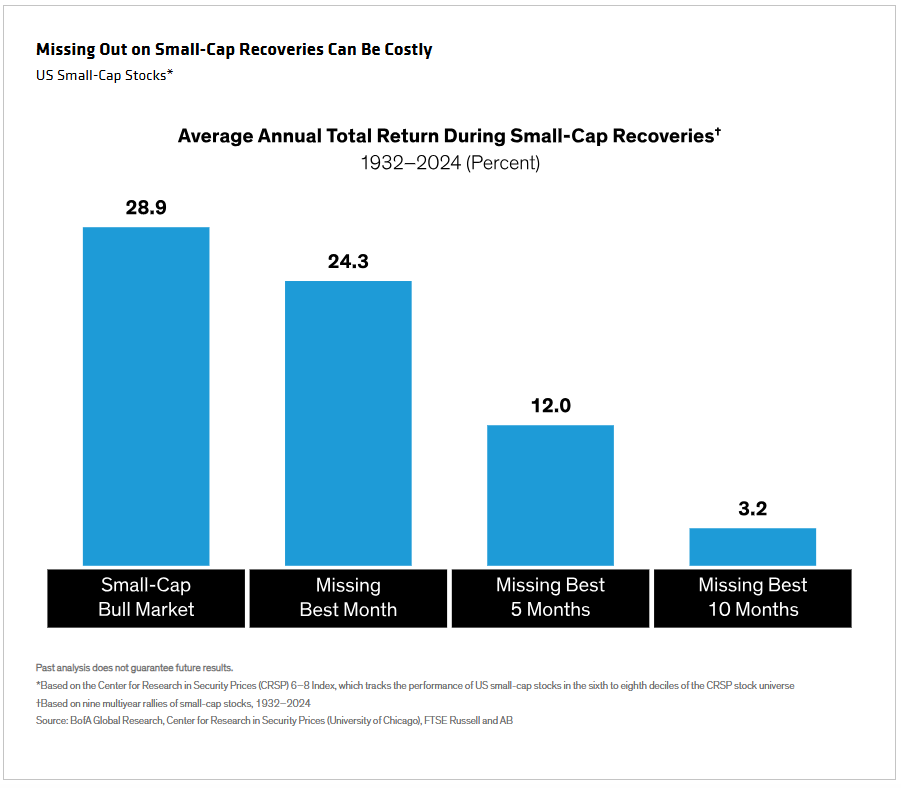Written by: James MacGregor, CFA, Samantha S. Lau, CFA and Chance Hardy|
Tariffs and trade wars have spooked investors of late. While few asset classes have been spared, US small-cap stocks have been particularly hard hit. At the same time, however, equity markets are showing signs of broadening, which could work in favor of small-caps over time.
Market turbulence can be jarring, and investors are rightly concerned about the short- and medium-term profitability of small-cap companies. Small-caps have underperformed in part because they’re perceived as being more economically sensitive than their larger-company counterparts.
Small Companies Could Be More Insulated from Trade Uncertainty
But today’s circumstances are unique. While tariffs and trade-policy uncertainty have likely slowed economic growth, the US economy is entering this period from a position of relative strength, with unemployment and inflation still low.
Trade tensions could eventually have a more significant impact on the US economy, but strong companies can still grow earnings—and may even enjoy some advantages in the evolving environment. Nearly 80% of Russell 2000 constituent revenues are generated in the US, according to Barron’s, giving small businesses greater protection from the negative effects of tariffs relative to larger-company stocks with more global exposure.
To be sure, smaller businesses are concerned about trade uncertainty, as reflected in a recent decline in the National Federation of Independent Business (NFIB) Small Business Optimism Index. Nonetheless, business optimism remains higher than it has been in the last three years (Display).

Market Broadening Could Bode Well for Small-Caps
Investors in small-caps may also take solace from a broadening market. Over the last 30 years, small-cap performance has been particularly strong during the last two cycles of unwinding large-cap growth concentration—that is to say, when markets are beginning to broaden (Display). The 10 largest stocks comprised more than half the market capitalization of the Russell 1000 Growth Index by the end of 2024, marking a record high in market concentration. While this trend has shown signs of unwinding, concentration is still much higher than at previous peaks. In our view, small-caps are in a sweet spot and could benefit from declining market concentration.

Quality Matters in Periods of Uncertainty
While broadening markets have witnessed greater small-cap returns, timing the turn can be challenging. Typically, economic recoveries—or environments with improving risk tolerance—have driven these pivots.
To capitalize on a broadening market with an uncertain beginning, we believe the best approach is to focus on higher-quality companies. High-quality stocks typically see lower drawdowns when the economy contracts and more upside when the economy expands.
High-quality factors such as return on equity (ROE) have historically offered attractive return patterns in both good times and bad. For example, the top quintile of high-ROE small-cap stocks has been more resilient than the broader small-cap market during recessions (Display). And although low-quality factors may lead for a short period directly after recessions, our research suggests that high-ROE companies also have a track record of outperforming over the longer term as economic growth accelerates.

The High Cost of Market Timing
In light of recent volatility, we believe investors’ best course of action is to stay put. Attempting to time the market can have dire consequences when small-caps eventually regain momentum. In fact, missing the best five months of a small-cap bull run can cut returns by more than half, while missing the best 10 months can virtually eliminate the gains of a small-cap bull market (Display).

Still, it’s important to be selective. Because the small-cap market is so vast, we believe investors should rely on active managers to navigate today’s market uncertainty. Using fundamental research, experienced investment managers can identify mispriced securities while targeting resilient companies with strong product lines, wide competitive moats and sustainable business models.
The last few months have been no picnic for small-cap investors. But over extended time horizons, small-caps have proven their mettle—especially as markets broaden. For small-cap investors, we believe persistence and patience will be the keys to long-term success.

